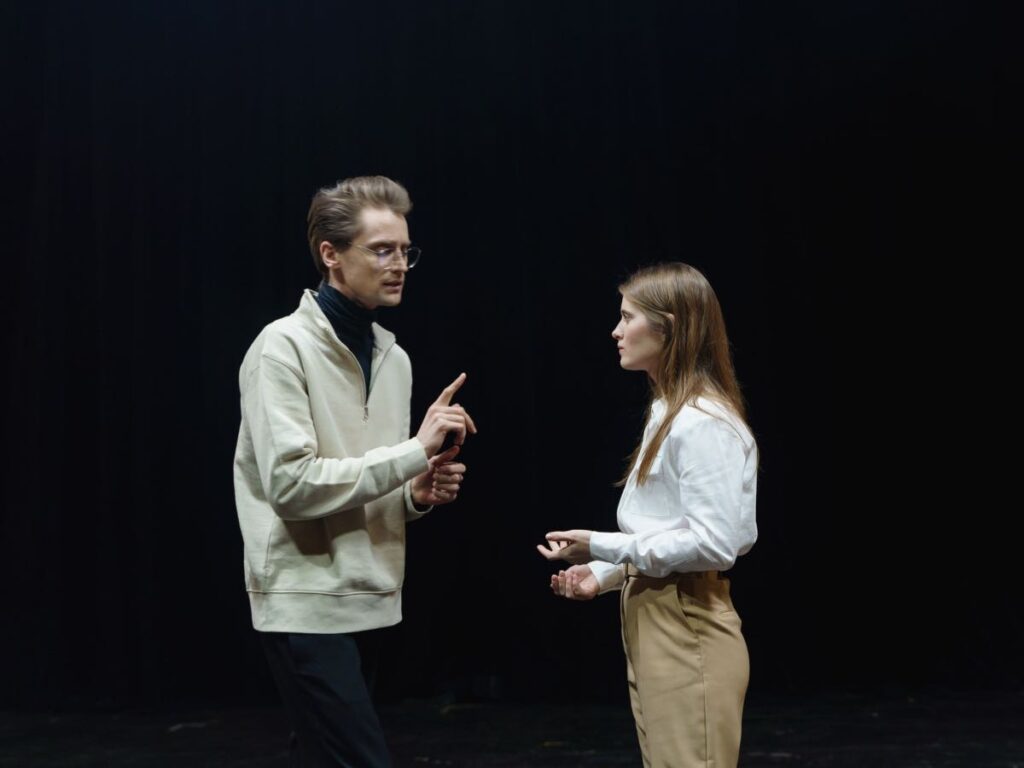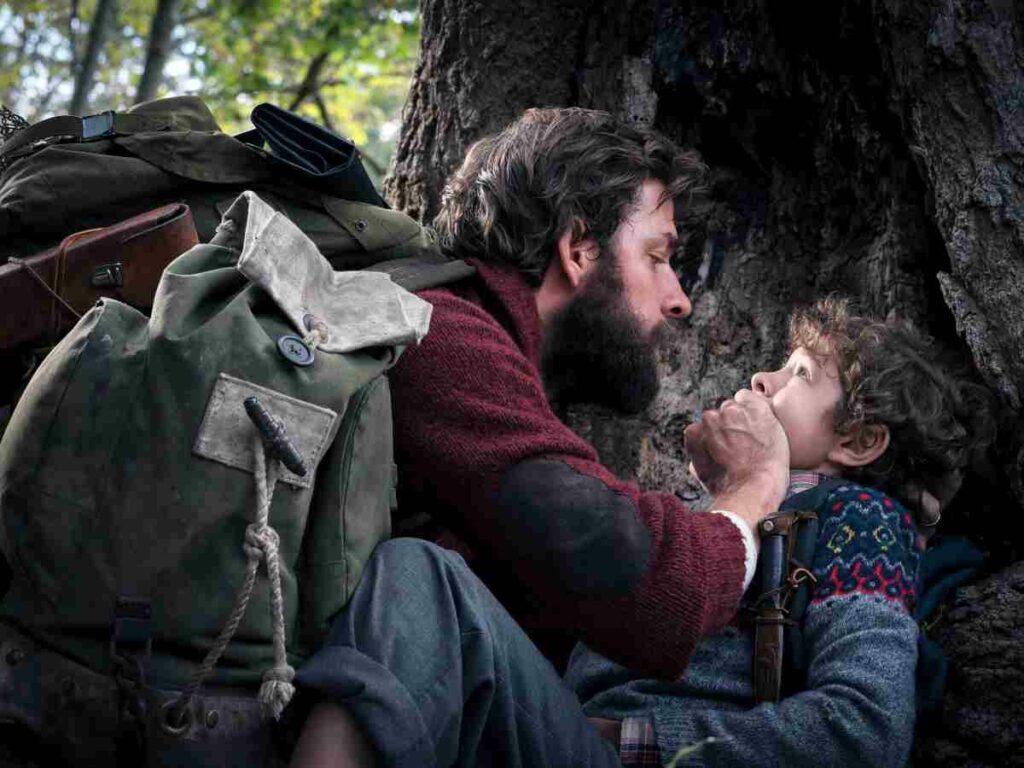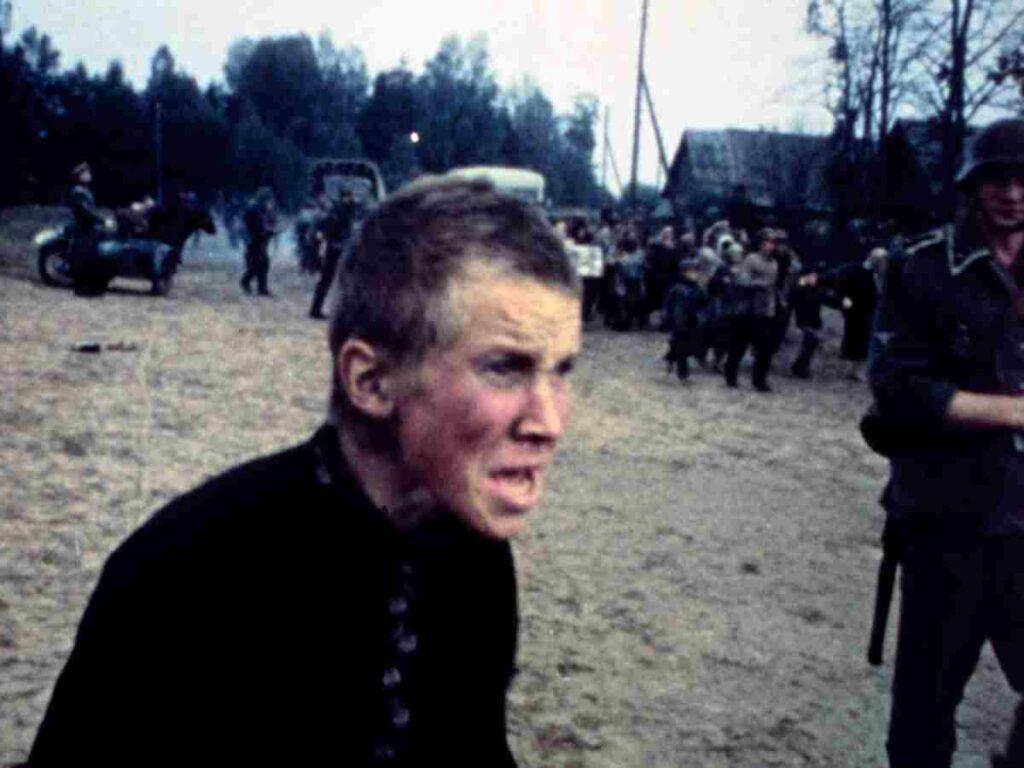Amongst acting techniques in general, and naturalistic methods in particular, the Meisner technique has been immensely influential in ushering a mode of interpretive acting. Developed by Sanford Meisner, this methodology of acting is often referred to as the “real people” technique. It involves the actors inhabiting a character, instead of simply pretending to play them. The actor does not merely read out the lines and adhere to a backstory for any given character. They’re required to effectively become the character and react as them, so as to impress a certain cinematic realism. The idea was to create a temporary unity between the actor and the character, so that a certain level of instinctive performance can be reached.
Who was Sanford Meisner?

In 1931, New York, a group of theatre practitioners came together to create a theatre collective known as Group Theatre. Inspired by the Stanislavski school of acting, this collective would go on to be incredibly influential, blazing a path for a new direction in the American school of acting. Two of its founding members, Lee Strassberg and Stella Adler were also associated with acting methods that they had developed and helped popularize. Sanford Meisner, another founding member of the collective, would similarly go on to distance himself from the group’s emphasis on Stanislavski’s techniques and create the Meisner Technique.
Do you have any idea how liberating it is to not care what people think about you? Well, that’s what we’re here to do. – Sanford Meisner
The main idea of the meisner technique was to move away from the cornerstone of the Stanislavski system – Emotional Recall. It is worth noting that the Stanislavski school of acting also influenced Lee Strassberg’s method acting, and Stella Adler’s technique.
Konstantin Stanislavski, who is often remembered as the father of modern acting techniques, pioneered a method of acting in which actors would try and relive events from their own experiences to recreate the emotional heft of the moment on stage. For example, if a character had to react to the death of a loved one on stage, they would recall a similar loss from their experience so as to channel a naturalistic portrayal of emotion.
Meisner broke with this tradition by creating a set of exercises and methods that improvised a rich inner life for the actors’ characters. Much of this was to be done in collaboration with their scene partner. Meisner believed that Emotional Recollection caused the actors to focus on the delivery of their individual lines in keeping with their feelings, but dampened their collective effort and presence with each other. His method emphasized a reactionary technique that would help actors in a scene build upon the work of the other, and allow them to be “in communion with one another.”
What are the components of Meisner Technique?
Meisner devised a process comprising three exercises for his method: Emotional Prep, Repetition, and Improvisation. Let us take a look at what each step entails.
1. Emotional Prep
Meisner believed that in order to fully inhabit, or, in effect, become a character, actors had to undertake the work to flesh out the rich inner lives of the characters they were supposed to play. It would not suffice to merely adopt mannerisms and recite lines in a particular intonation. Actors had to provide their characters with motivations, desires, likes and dislikes, so as to create a deep emotional understanding based on the character’s position and environment.
Some of the ways this was accomplished was through establishing a character’s background and its effect on their beliefs and motivations. Another way was to interact with people who had similar experiences as the character and try to imbibe their experiences in their portrayal.
A healthy and organic performance was encouraged by tapping into the emotions of a character and reacting to them as if they were one’s own. For example, if the sentimental motivation of a character was that they were grieving, it was helpful to explore other emotions like rage or betrayal through the primary feeling, in this case, sadness, and ascertain how it would realistically affect their character’s emotional spectrum. This allowed the actors to intimately know their characters and create a convincing, fully developed character.
2. Repetition
The idea of the repetition exercise was to promote a natural and truthful exchange between actors. Meisner would have scene partners face each other, and repeat a single line of dialogue back and forth. The words may remain the same, but with each exchange, the idea was to shift the tonality, intensity and emotion of the dialogue. In this manner, the actors were not simply parroting lines in a theoretical construct; rather, it caused them to instinctively react as the character, instead of getting caught up in specifics. The idea was to promote the shared experience of actors “living truthfully under imaginary circumstances.”
3. Improvisation
The fundamental principle of improvisation is “Yes, and?” and Meisner relied upon this concept of spontaneity and reactionary acting to foster a deep connection between actor and character. Building further upon the repetition exercise, improvisation allowed actors to not think and simply react to each other as their character would. It was the culmination of the actor inhabiting the character, as he wasn’t simply thinking and feeling according to directions. They truly became the character, and created a natural chemistry with their collaborator. This was beneficial to not only create a richer story for the character, but also craft unique relationships that evolve naturally within the work itself.
What is the Meisner Repetition Exercise/Repetition Word Game?
The Repetition Exercise is key to the Meisner technique. As we have previously discussed, the exercise involves actors repeating a single line of dialogue to each other, varying in tone, intention and sentiment each time. Eventually, they may further improve upon it by carrying out physical tasks in conjunction with the dialogue, so as to further improvise mannerisms and react instinctively as their character.
A departure from Stanislavsky’s procedures, Meisner devised this exercise to promote a collaborative flow between actors in a scene. By discovering and reacting emotionally to each other’s characters, they could make their relationship and character dynamics believable, imparting it a certain depth. In this manner, an exchange of dialogue was no longer reduced to two separate entities reading lines on a stage, but rather, two characters reacting to each other’s work in tandem, by being present in the moment.
Famous actors who use this technique
The Meisner technique is one of the foremost acting methods in the world of acting and directing, and it has massively influenced artists in the American School of acting. Many well-known and critically acclaimed actors have been trained in this method.
Christoph Waltz
An Austrian German actor, Waltz is renowned for playing antagonists like Hans Landa in Inglourious Basterds and Blofeld in Spectre. Watch him indulge in the Meisner Technique’s repetition exercise here.
Diane Keaton
The award-winning actress of Godfather II and Annie Hall fame has credited Meisner with opening up new possibilities for her range as an actress. She noted that he “introduced her to rage,” enabling her to move beyond her experiences and feelings to truly merge with the characters she plays.
Sandra Bullock
Bullock had the chance to take classes with Meisner in New York, and she greatly benefitted from the instinctive approach of the technique. For example, while filming Speed, she actually learnt how to drive a bus, and drove it herself in several scenes to relay the authenticity of her character and be present in the moment.
Nawazuddin Siddiqui
The critically acclaimed Bollywood actor has relayed the experience of working with the Meisner technique as a give and take between the character and the actor. His work on films like Manjhi: The Mountain Man, and Gangs of Wasseypur are a testament to the rich inner life that he bestows on the characters.
Michelle Pfeiffer
Having acted in iconic films like Scarface and The Fabulous Baker Boys, Pfeiffer knows a thing or two about spontaneous, authentic performances. She notes the role of the Meisner technique’s focus on emotional bonds between the character and actor, and prep work that help create immersive performances.
Other Acting Techniques You Should Know

Classical Acting: This approach is a by-the-book undertaking towards acting with emphasis on voice, emotion, physical mannerisms, memory, etc.
Stanislavski’s system: Stanislavski’s method relies on the actor’s own lived experiences and memories to portray similar emotions on stage. The actor finds common ground with the character, sharing a similar emotional path to achieve a truthful performance.
Method Acting: Developed by Lee Strassberg, it is a variety of methods that allow the actors to live, feel and understand their characters. It goes beyond the theoretical reading of a character. Method acting is more emotionally reliant and not action-oriented like classical acting.
Chekhov’s psycho-physical approach: This approach focuses on transformation, and prompts the actor to make artistic choices for the character using impulse and imagination. The idea was to give expression to the internal needs of the character through introspection and conscious examination.
Practical Aesthetics: Developed by David Mamet, this method is inspired from Stanislavski’s method and the Meisner technique. It encourages actors to interpret the character and adapt their circumstances and experiences to create an authentic performance.
Brechtian Method: The Brechtian method was created by playwright and theatre practitioner Bertolt Brecht to create an audience response that was based on logical reflection, and not emotional response towards the characters. It was employed in the social dramas that he wrote.
Stella Adler’s Method: Having been a student of Stanislavski, Adler relied on the practice of emotional recall to create her acting method. However, she advocated for the use of imagination in addition to the recall process, so as to present an enhanced portrayal of the character. Actors were encouraged to imagine a world for their characters in their imagination.
Uta Hagen’s Method: A practice that seeks to affect a cinema of realism, Uta Hagen’s method encourages actors to not overthink the character theoretically, and build them upon the basis of observations from daily lives. It consists of five stages: substitution, transference, specificity, authenticity, and preparation.
Viola Spolin’s theatre games: Spolin’s method focuses on spontaneity and improvisation. It is often used as a warm-up practice to unleash an actor’s creative side and channel it in their performance.
Meisner Technique Vs. Method Acting
While both Meisner and Lee Strassberg, the creator of method acting, were students of Stanislavsky and deeply inspired by his acting techniques, there are some key differences as well as similarities between the two.
Both Meisner and Strassberg advocate the usage of drawing from one’s own experiences. They found commonality through drawing Stanislavski’s practice of emotional recall.
It is from this similarity that the most prominent difference in these approaches arises. Method acting revolves around the act of looking in, introspecting upon feelings and experiences to create an authentic performance. However, it can be a little isolating in its view of the performance taking place within the actor’s psyche.
This is where the Meisner technique comes in. It believes that the actor’s memory and feeling must be supplemented by an imagined life for the character, and an organic bond between the character and actor. The relationships between two actors playing opposite each other must also be further explored and strengthened to create a performance that exhibits artistic unity and coherence, and is not a solitary portrayal.
Where method acting looks inward within the actor to define the essence of the character, the Meisner technique looks outward. It draws from other actors in the scene, and prioritizes imagination in order to enrich characters and imbibe them with a rich, inner life of their own.




